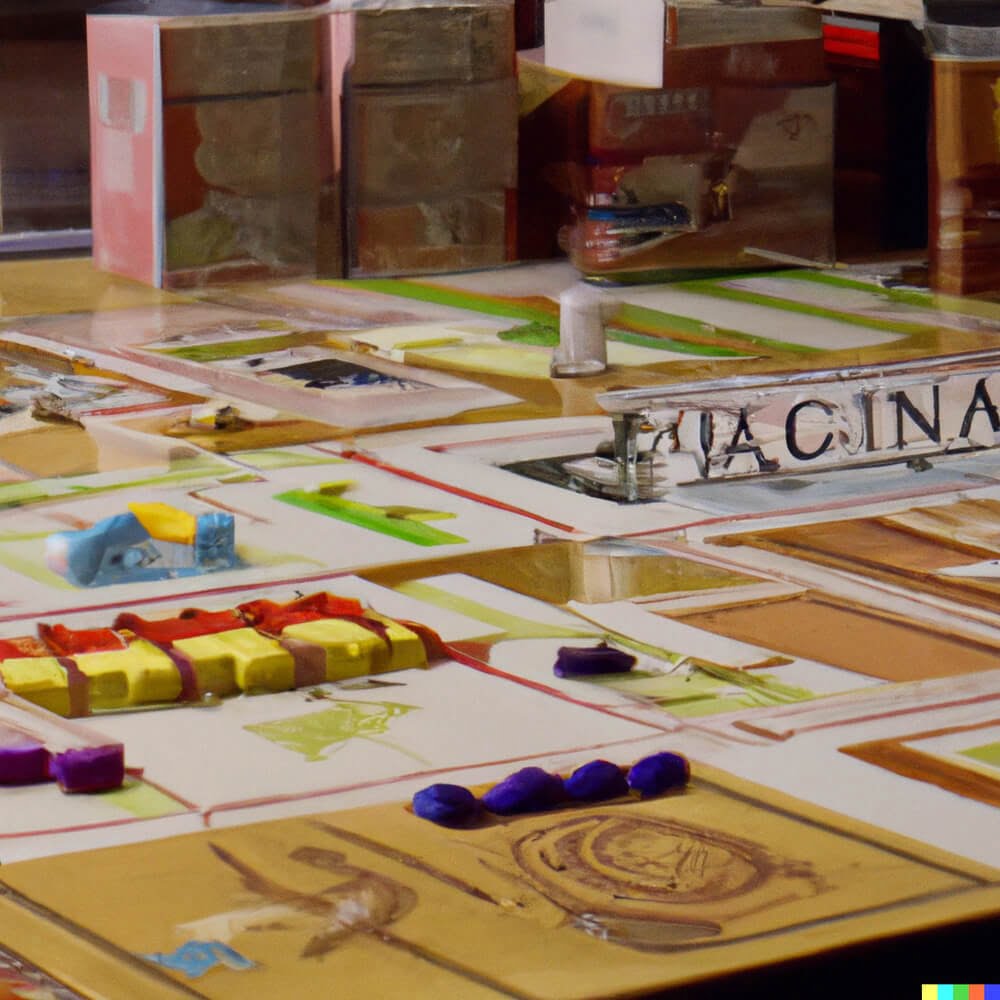Throughout history, board games have captivated people with their strategic challenges and immersive gameplay. One particular genre of classic board games that continues to stand the test of time is centered around building an army. These games transport players to epic battles and offer endless possibilities for tactical decision-making.
From ancient civilizations to futuristic worlds, classic board games about building an army have held a special place in the hearts of enthusiasts. Whether it’s deploying mighty warriors on a sprawling battlefield or navigating treacherous terrains with powerful resources, these games offer a unique blend of strategy, skill, and luck.
The enduring popularity of these classic board games can be attributed to their ability to engage players in immersive experiences. Gathering around a table with friends or family, players are tasked with creating and commanding armies to conquer their opponents’ territories or achieve specific objectives. The competitive nature drives players to carefully plan their moves, anticipate their adversaries’ strategies, and adapt their approach as the game progresses.
Join us as we delve into the enticing world of classic board games about building an army. From exploring their rich origins and history to discovering popular titles and delving into various gameplay strategies, this article will provide a comprehensive guide for both newcomers and seasoned veterans alike. So grab your dice, prepare your troops, and embark on a journey full of complex decision-making, intense battles, and the thrill of victory.
Origin and History
Classic board games about building armies have a long and rich history that dates back centuries. One of the earliest examples is the ancient Indian game of Chaturanga, which was played around the 6th century AD. Chaturanga was a strategic game of warfare, where players used different pieces representing infantry, cavalry, elephants, and chariots to defeat their opponents. This early form of army building laid the foundation for many future board games.
In Europe, the iconic game of Chess emerged during the 6th century as a direct descendant of Chaturanga. Chess became hugely popular across medieval Europe and introduced more refined rules for army building. Each player controlled various types of soldiers with unique abilities such as knights, bishops, and castles. The game required careful strategic planning and tactical maneuvering to outwit opponents on an 8×8 grid battlefield.
As time went on, more complex board games centered around army building were developed. In the 20th century, classic war-themed board games like Risk and Axis & Allies gained popularity. These games combined elements of warfare with resource management, diplomacy, and territorial control. Players had to strategically deploy their armies while considering potential alliances or betrayals in order to conquer territories or achieve specific objectives.
The influence of classic board games focused on building an army can be seen in modern strategy games both on tabletops and video screens. Games like Warhammer Fantasy Battle have expanded upon the idea of creating intricate armies with detailed miniatures and vast lore-rich universes. Video game adaptations such as Total War series provide players with immersive digital experiences that emulate the complexities of commanding armies.
Overall, classic board games about building an army have had a profound impact on shaping modern strategy games in both analog and digital forms. The timeless appeal of strategic gameplay, combined with the satisfaction of outsmarting opponents, makes these games enduring favorites among players of all ages.
Popular Classic Board Games
Axis & Allies
One of the most beloved classic board games centered around building an army is Axis & Allies. In this game, set during World War II, players take on the roles of major powers and control their military forces to conquer territories and win the war. The gameplay mechanics involve a combination of strategy, diplomacy, and luck.
The game board is a map of the world divided into territories, each with its own strategic importance and resources. Players start with a set number of units representing infantry, tanks, aircraft carriers, battleships, and more. They must strategically deploy their units across the board to capture enemy territories and secure victory objectives.
Theme plays a crucial role in Axis & Allies as players must navigate historical events and decisions that impact the outcome of the war. The game not only tests tactical skills but also challenges players to think like military leaders in order to maximize their resources and achieve strategic goals such as capturing key cities or cutting off supply lines.
Overall strategies in Axis & Allies can vary depending on factors such as playing style, chosen power (such as Germany, the United States, or Japan), and initial setup. Some players may opt for an aggressive approach by focusing on overwhelming their opponents with powerful offensive forces. Others may prefer a defensive strategy by fortifying their positions and repelling enemy attacks. A balanced approach that combines offense and defense can also be effective.
Risk
Risk is another classic board game that has stood the test of time when it comes to army-building gameplay. In Risk, players take turns deploying armies onto territories with the goal of eliminating opponents while conquering continents and dominating the world map.
Players start with a set number of armies which they can strategically place on any territory they own or reinforce existing positions. The objective is to attack adjacent territories controlled by other players using dice rolls to determine combat outcomes. Successful battles result in gaining control over more territories and earning additional armies to deploy.
The strategy in Risk revolves around deciding when to attack, where to fortify defenses, and which continents to focus on capturing. Players must weigh the risks and rewards of different approaches, whether it’s expanding rapidly or consolidating power in a specific region. Building alliances and negotiating with other players can also play an important role in achieving victory.
The game is known for its intense back-and-forth battles and nail-biting dice rolls that often lead to unexpected outcomes. Risk is as much about managing luck as it is about making calculated moves, keeping players on the edge of their seats throughout the game.
Warhammer 40,000
For fans of sci-fi and fantasy, Warhammer 40,000 is a classic board game that offers a richly immersive experience centered around army building. Set in a dystopian future where various factions battle for control of the galaxy, players assemble miniature models representing their armies and engage in epic clashes.
The gameplay mechanics of Warhammer 40,000 involve moving units across beautifully crafted terrain boards and engaging in combat using specialized rules for each unit type. Players must carefully consider positioning, line of sight, cover, and synergy between different units to gain tactical advantages over their opponents.
There are multiple strategies players can employ in Warhammer 40,000 depending on the chosen faction and playstyle. Some factions excel at close-quarters combat while others specialize in long-range shooting or magic. Successful army building involves finding a balance between offensive power, defensive capabilities, mobility, and support elements such as healers or spellcasters.
What sets Warhammer 40,000 apart from other classic board games is its deep lore and storytelling aspect. Each faction has its own backstory and motivations which adds an extra layer of immersion to the gameplay experience. Additionally, players often engage in narrative-driven campaigns where battles have lasting consequences and shape the ongoing narrative of the game.
These are just a few examples of the many popular classic board games that revolve around building an army. Each game offers its own unique mechanics, themes, and strategies, catering to different preferences and playstyles. Whether you’re a history buff, a fan of intense battles, or someone who enjoys strategic decision-making, there is a classic board game out there that will satisfy your craving for army-building gameplay.
Gameplay Overview
Classic board games about building an army offer players a rich and immersive gameplay experience. These games typically involve strategic planning, resource management, and tactical decision-making. The objective is to build and lead an army to victory by outmaneuvering opponents, capturing territories, or achieving certain objectives. Army building plays a crucial role in these games as it determines the strength and capabilities of a player’s forces.
In classic board games centered around building an army, players usually take turns performing actions such as recruiting new units, improving their armies’ abilities, managing resources, or engaging in battles. Each player starts with a set number of units and must strategically deploy them on the board to control territories or gain advantages over opponents. Some games feature different types of units with unique abilities or strengths, allowing for varied strategies.
The rules of classic board games about building an army can vary from game to game, but they often involve elements such as dice rolls for combat resolution, special cards or abilities that enhance gameplay, and limited resources that must be managed efficiently. The ultimate objective may be to eliminate all opponents’ armies, capture a specific territory or stronghold, complete missions or objectives within a certain timeframe, or accumulate victory points based on various criteria.
Army building is at the heart of winning these games. Players must carefully consider how they allocate their resources between recruitment, upgrades, and other actions to ensure that their armies are well-balanced and capable of achieving their objectives. Strategies may involve focusing on offense by recruiting powerful attacking units, prioritizing defense by fortifying territories or investing in defensive capabilities, or maintaining versatility by having a balanced mix of unit types.
Overall, classic board games about building an army provide players with an engaging and strategic gaming experience. By understanding the rules and objectives while effectively utilizing the dynamics involved in army building, players can strive towards victory while outwitting opponents through cunning strategies and well-executed maneuvers on the battlefield. With their emphasis on strategy and resource management, these games continue to captivate players of all ages and remain an enduring favorite in the world of board gaming.
Army Building Strategies
In classic board games centered around building an army, players have the opportunity to craft their own unique strategies to achieve victory. One common approach is focusing on defense, which involves fortifying your positions and ensuring the safety of your units. By prioritizing defensive structures and units with high durability, players can create a formidable army that can withstand enemy attacks.
The benefit of this strategy is that it allows players to maintain control over important areas of the game board while discouraging opponents from launching direct assaults. However, relying too heavily on defense may leave players vulnerable to unexpected maneuvers or strategies focused on exploiting weaknesses.
Another popular strategy in classic board games about building an army is offense. This tactic involves amassing a powerful force capable of swift and devastating attacks against opponents’ territories and units. By investing heavily in offensive units and abilities, players can assert dominance on the battlefield and conquer their adversaries swiftly.
The advantage of this strategy is its ability to keep opponents on their backfoot by continually pressuring them and forcing them to react rather than act proactively. However, offensive strategies may expose players to counterattacks if not executed efficiently or if opponents successfully defend against them.
Lastly, a balanced approach combines elements of both defense and offense to create a well-rounded army capable of adapting to different situations. This strategy focuses on maintaining a certain level of defensive strength while still pursuing opportunities for aggressive plays when they arise.
By diversifying their unit composition and investing in technologies or abilities that enhance both attack and defense capabilities, players employing a balanced approach strive for flexibility on the battlefield. The benefit of this strategy lies in its adaptability; however, it requires careful resource management and decision-making to strike the perfect balance between offense and defense.
Regardless of the chosen strategy, a few tips can assist players in achieving success in classic board games centered around army building. First, understanding the game rules and mechanics thoroughly is crucial to making informed decisions and crafting effective strategies. Players should familiarize themselves with the strengths and weaknesses of different unit types, resource management systems, and victory conditions.
Second, flexibility is key; being able to adapt your strategy based on changing circumstances or opponents’ moves will give you an edge on the battlefield. Finally, learning from past experiences by analyzing previous matches or seeking advice from experienced players can help refine your skills and uncover new tactics.
In summary, classic board games about building an army offer players a wealth of strategic possibilities. Whether focusing on defense, offense, or adopting a balanced approach, each strategy comes with its own set of benefits and drawbacks.
By understanding these strategies and employing effective tactics within them, players can increase their chances of success on the battlefield. The next section will delve into the intense battles that occur in these games and the tactical decisions players must make to outmaneuver their opponents.
Intense Battles and Tactical Decisions
In classic board games centered around building an army, intense battles are a central and exhilarating component of gameplay. These games provide players with the opportunity to engage in strategic decision-making during battles, requiring them to carefully plan their positions, deployments, and resource management. The adrenaline-pumping nature of these battles adds an extra layer of excitement and challenge to the gaming experience.
During battles in classic board games about building an army, players must make strategic decisions regarding positioning. This involves carefully considering the terrain and how it can be used to gain advantages over opponents. Players may need to analyze line-of-sight mechanics, chokepoints, and advantageous vantage points in order to position their units effectively. By making wise positioning choices, players can increase their chances of success and gain a tactical edge over their opponents.
Another crucial tactical decision that players need to make during battles is deployment. This involves determining the initial placement of units on the game board before the battle begins. Players must consider factors such as unit strengths and weaknesses, distance from opponents’ units, and potential routes for advancement or retreat. Effective deployment can greatly influence the outcome of a battle by creating favorable matchups or securing important objectives early on.
Resource management is another key aspect of decision-making during battles in classic board games centered around building an army. Players must allocate resources wisely in order to maximize their chances of victory. This includes managing limited resources such as currency, supplies, or reinforcements. Making difficult choices regarding when and where to deploy these resources adds another layer of complexity to the gameplay, as players must weigh short-term gains against long-term strategies.
Social and Competitive Aspects
Classic board games about building an army not only provide endless entertainment but also foster social interaction and competitive gameplay. These games have a unique ability to bring friends and family together, creating memorable experiences and forging strong bonds. The joy of playing these games lies in the shared experience of strategizing, outwitting opponents, and engaging in intense battles.
One of the greatest joys of classic board games centered around building an army is the opportunity they provide for social interaction. Gathering around a table with friends or family members creates a sense of camaraderie that cannot be replicated by digital gaming.
The face-to-face interaction allows players to engage in friendly banter, negotiation, and strategic discussions. These games often require players to form alliances, negotiate trades, or make tactical decisions together, enhancing the social dynamics and encouraging collaboration.
Furthermore, classic board games about building an army have seen the growth of dedicated tournaments and leagues. These events provide an avenue for players to showcase their skills and compete against others who share their passion for these games. Tournaments bring together enthusiasts from different backgrounds and skill levels, fostering a sense of community within the gaming community. Players can exchange strategies, learn from each other’s gameplay styles, and forge connections with like-minded individuals.
In recent years, classic board games about building an army have also embraced technology to enhance their social and competitive aspects. Digital adaptations have made it possible for players to engage in online multiplayer matches with friends or compete against strangers from around the world.
This has opened up new avenues for competition and provides opportunities for those who may not have access to local gaming communities. Additionally, online platforms offer matchmaking systems that ensure fair gameplay experiences by pairing players with similar skill levels.
Overall, the social and competitive aspects of classic board games about building an army contribute greatly to their enduring appeal. Whether playing with friends at home or participating in organized tournaments, these games create opportunities for meaningful interactions while challenging players’ strategic thinking and decision-making skills. The blend of competition, cooperation, and shared experiences make these games a timeless source of entertainment for players of all ages.
Modern Adaptations and Expansions
In recent years, classic board games centered around building an army have adapted to the modern gaming landscape in various ways. Many of these games have seen notable expansions and re-releases that have kept them relevant and sought after by enthusiasts. Additionally, the rise of digital adaptations has introduced these classic games to new audiences and provided opportunities for convenient online play.
- One example of a notable expansion is “Axis & Allies: Europe 1940″ released in 2010. This expansion adds a whole new layer to the game by focusing specifically on the European theater of World War II. Players can now experience the strategic challenges and decisions faced by both the Axis and Allied powers in a more detailed and immersive way.
- Another example is the re-release of “Risk: Legacy” in 2011. This version of the classic game introduced a unique concept where players make permanent changes to the game board throughout multiple play sessions. This innovation added a whole new level of excitement and replayability to the game, as players felt a sense of ownership over their evolving world.
In addition to expansions and re-releases, digital adaptations have played a significant role in keeping classic army-building board games relevant. Platforms such as Steam, Tabletop Simulator, and mobile apps have made it easier than ever for players to engage with these games online or play against AI opponents.
For example, “Memoir ’44 Online,” a digital adaptation of the popular World War II-themed strategy game, allows players from around the world to compete against each other in intense battles without needing physical components.
Overall, classic board games centered around building an army have successfully adapted to the modern gaming landscape through expansions, re-releases, and digital adaptations. These adaptations provide new experiences, increased replayability, and convenient access for both long-time enthusiasts and newcomers alike.
Conclusion
In conclusion, classic board games about building an army have stood the test of time due to their enduring appeal. These games offer strategic gameplay that challenges players to outwit their opponents and devise winning strategies. The satisfaction of carefully planning and executing moves, as well as the excitement of intense battles, make these games a favorite among enthusiasts.
One of the key factors contributing to the lasting popularity of these games is the timeless joy of gathering around a table and playing. They provide an opportunity for friends and family to come together, bond over shared experiences, and engage in friendly competition. From young children learning basic tactics to seasoned veterans honing their strategic skills, there is something captivating about moving miniature armies across a game board that appeals to people of all ages.
Moreover, classic board games centered around building an army have adapted to the modern gaming landscape by incorporating digital adaptations and expansions. As technology advances, many of these games have found new life in online platforms or mobile applications. Additionally, notable expansions and re-releases keep these games relevant and sought after by enthusiasts who appreciate updated components or expanded gameplay options.
Ultimately, the enduring appeal of classic board games about building an army lies in their ability to provide strategic challenges, satisfaction through outwitting opponents, and meaningful social interactions among players. Whether you are a casual player seeking moments of fun with loved ones or a dedicated gamer seeking competitive triumphs in tournaments and leagues, these games continue to captivate players worldwide.
So gather your forces, roll those dice, and embark on epic quests as you prove your tactical prowess on the battlefield.
Frequently Asked Questions
What is the game where you can lead an army?
One of the games where you can lead an army is the popular strategy game called “Risk.” In Risk, players take on the role of military commanders and strategize how to conquer territories and expand their dominance across a world map. With armies at their disposal, players plan their moves, make alliances, and engage in battles to achieve global domination.
The game offers a thrilling experience as players must balance offensive and defensive tactics while taking into account various factors like resources and troop placements. Leading an army to victory in Risk requires careful planning, strategic thinking, and adaptability to handle unexpected challenges that arise during gameplay.
What is the board game about war?
A notable board game specifically focused on war is “Axis & Allies.” This game places its players right in the midst of World War II, allowing them to control the economies and militaries of major nations involved in the conflict.
Offering a deep level of complexity, Axis & Allies combines elements of strategy, diplomacy, negotiation, and combat as players strive for objectives such as capturing key territories or achieving technological advancements. With different units representing infantry, tanks, aircraft carriers, submarines, and more, this historically themed game offers countless possibilities for coordinating large-scale offensives or preparing for critical defensive maneuvers.
What is the most iconic board game?
When it comes to iconic board games that have stood the test of time, “Monopoly” undoubtedly takes center stage. Created in 1935 by Parker Brothers (now a subsidiary of Hasbro), Monopoly has become one of the top-selling board games globally. The classic version depicts players competing against each other to purchase and develop properties within a stylized cityscape using play money.
It incorporates elements such as buying properties from opponents or auctioning when they’re not available directly from the bank. Additionally, there are chance cards, community chest cards, railroads, utilities – all contributing to a dynamic interplay of luck and strategy throughout the gameplay experience. Its recognizable design with distinct playing pieces like the top hat or the Scottie dog, along with its enduring popularity across generations, make Monopoly an iconic board game that remains a household favorite.

I love playing all kinds of games – from classics like Monopoly to modern favourites like Ticket to Ride.
I created this blog as a way to share my love of board games with others, and provide information on the latest releases and news in the industry.





